History of programming languages: from BASIC to Visual Basic
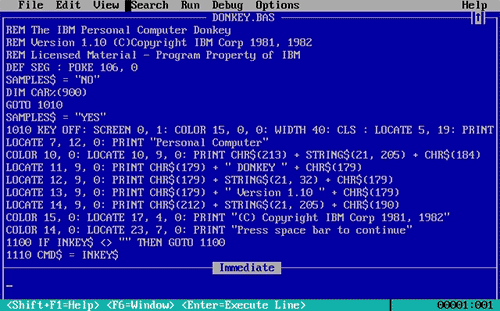
DONKEY.BAS. Included with the IBM PC in 1981. Co-author - Bill Gates
The name BASIC appeared as an abbreviation for “Beginner's All — purpose Symbolic Instruction Code”, which literally means “multi-purpose language of symbolic commands for beginners”. This is the case when the literal translation accurately conveyed the essence. The key feature of BASIC was not only its simplicity, but also the ability to find a solution to problems in dialogue with a computer.
For many computers of the late 60s, BASIC was positioned as the only general-purpose high-level programming language, and over time this led to the appearance of its various modifications. The turning point in the development of the language was the emergence of Visual Basic.
Background
In the mid-1950s, the role of programming in machine codes began to decline. Languages of a higher level appeared - Fortran, Algol, Cobol and so on.
The first of these and one of the most common was Fortran (FORTRAN, from FORmula TRANslator - formula translator), developed by a group of programmers from IBM in 1954 (the first version). This language was oriented towards scientific and technical calculations of a mathematical nature.
The name Algol (ALGOrithmic Language), the first version of which appeared in 1958, emphasizes the fact that it is designed to record algorithms. Thanks to a clear logical structure, Algol has become the standard means of writing algorithms in the scientific and technical literature.
Then, high-level programming languages were characterized by subject orientation. In addition, such languages were too complicated for novice developers, especially if they were not engineers. Therefore, it is natural that over time a programming language for “mere mortals” has appeared.
BASIC. Just basic
A famous story about an English missionary is associated with the idea of creating this programming language .
In the XIX century, an English missionary who was looking for an opportunity to facilitate and simplify contact with the natives came up with a brilliant idea - to isolate from the English language its simplest part, which has practically no grammar and contains about 300 of the most common words. This truncated subspecies of the English language was called BASIC ENGLISH, and as practice has shown, it really turned out to be very easy to learn, and soon gained popularity not only among the native population, but also among immigrants for whom English was not their native language.After a hundred years, employees of the Faculty of Mathematics of Dartmouth College chose a similar path. They decided to facilitate the interaction between the computer and the non-professional user using a "simplified" programming language.
In 1964, Thomas Kurtz and John Kameni created a specialized programming language that consisted of simple English words. The new language was called BASIC.

They used it to teach students programming skills. The language turned out to be so simple and understandable that after a while it began to be used in other educational institutions.
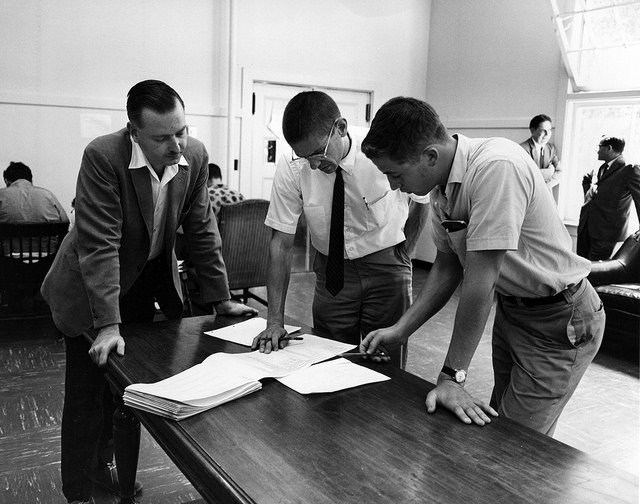
Fortran II and Algol 60 had a serious impact on BASIC. In addition, developers implemented working mechanisms for systems with a time-sharing mode, as well as text processing and matrix arithmetic. The language compiler was originally written for the GE-265 mainframe.

Heyday
In the 70s, more compact computers (PCs) appeared. This circumstance was successfully used by Bill Gates and Paul Allen, the founders of Microsoft.
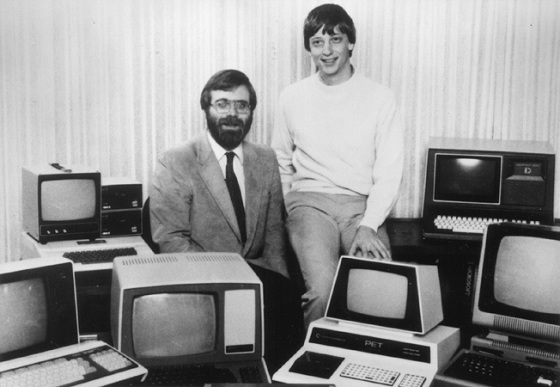
They created a new version of BASIC for the first Altair computers (MITS Altair), capable of working in 4KB of RAM. Over time, this version has become one of the most popular programming languages in the world.

Altair
The period of the greatest prosperity and development of the original BASIC can be considered the end of the 1970s - the first half of the 1980s. Its versions appeared on other platforms, and soon began to diverge in millions of copies with all kinds of changes and improvements. One of the most popular versions was Applesoft BASIC, which became the standard language on Apple II.
Applesoft BASIC was written by Microsoft as a replacement for the Integer BASIC system, which was used in the very first Apple II model and had very limited capabilities. Applesoft BASIC was flashed in ROM of all Apple II models, starting with Apple II +, and all Apple II clones. An earlier and truncated version of Applesoft BASIC was also available on cassettes for the very first Apple II model.

For the CP / M operating system, the BASIC-80 dialect was created, which determined the development of the language for a long time.
When the first IBM PC personal computers appeared, it was he who became the standard in programming, but already in the form of GW-Basic.
In the mid-1980s, BASIC became the main language in complex models of programmable calculators, which by that time had reached the power that allowed the use of a full-fledged high-level language. BASIC was built into the Soviet MK-85 Electronics calculator and all its later models.
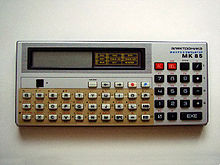
Also in 1985, the IDE Quick Basic, an integrated development environment and BASIC programming language compiler, was developed by Microsoft from 1985 to 1988. There were versions for DOS and Mac OS. The used BASIC dialect was based on the advanced GW-BASIC dialect: support for custom types, structural programming constructs was implemented, support for graphic and disk operations was significantly expanded.
Robert "Bob" Zale in 1987, based on his many years of development, BASIC / Z created Turbo Basic, and then sold it to Borland. Infoworld magazine named it one of the most significant products of that year.
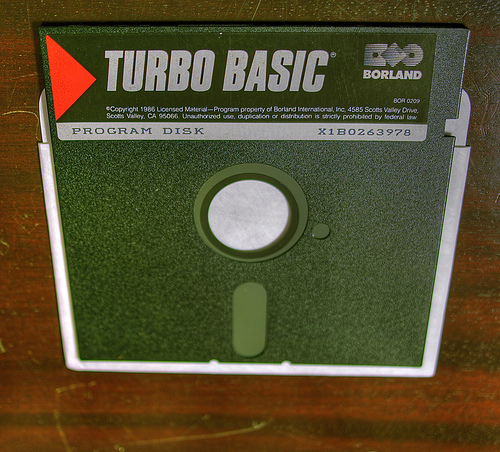
Unlike most BASIC implementations of that period, Turbo Basic was a complete compiler that generated native code for MS-DOS.
Despite the huge number of versions of the BASIC language, when developing a new version of the language, compatibility with previous versions was always preserved: it was possible to work with a program written for earlier versions (sometimes with minor changes) in subsequent versions of this language.
Second Life
In the early 90s, the Microsoft Windows operating system with a new graphical user interface appeared.
To create a simple program, developers had to write several pages of code: register volume blocks of code for menus and windows, fonts, clear memory, draw buttons, etc. However, the advantages of the new interface were quite strong, and Windows had real prospects for becoming popular everywhere.
Microsoft understood that it was necessary to somehow make life easier for developers. Therefore, the company launched several parallel projects to create a new programming language and development environment for Windows.

BASIC got a second life when Microsoft released Visual Basic. It was the logical conclusion of the evolution of the language and, despite the retention of the usual keywords, in structure and set of features was closer to Pascal than to the original BASIC.
In 1991, the first version of the new Microsoft Visual Basic IDE appeared. However, at that moment Microsoft modestly assessed the capabilities of this system, orienting it, nevertheless, to the category of beginner and unprofessional programmers.
Of course, this was only the first step, as the company of Bill Gates planned to strengthen the position of Windows in the market. And this would be very difficult to do, leaving commercial developers without effective means of creating applications for MS Windows.
The programming system created by Visual Basic developers allowed us to abstract from the internal structure of Windows. Menus, windows, lists, buttons, text input fields and other elements of the Windows interface were added to the program using the simplest drag & drop operations, and most of the code for their initialization and settings was automatically generated.
VB programmers could create their first program within a few minutes after starting to learn this language. Moreover, Visual Basic allowed developers to create new GUI elements that could also be used in programs along with standard ones.
Despite the fact that many C-developers did not take seriously Microsoft's attempts to make a simple and understandable tool for developing Windows-based programs, the rest of the IT community members had high hopes for Visual Basic.
In 1994, the company released Visual Basic for Applications. It was at this time, after the incorporation of VBA into Microsoft Office, Basic became one of the main programming standards for Windows.
Originally conceived as a toy, Microsoft's Visual Basic conquered the programming world incredibly quickly. Its popularity is due to two reasons: relative simplicity and productivity.
VB programs were slower than their C / C ++ counterparts, but still they are fast enough for many business purposes and require much less development time. Forms were the very effort-saving abstraction VB offered to Windows programmers.
The VB IDE allowed you to design windows graphically by dragging controls, such as buttons and lists, from the toolbar to the form. Having received a satisfactory appearance of the form, you could go to the code part and write event handlers for each form control.
Application development in VB, therefore, consisted of creating several forms that interacted with each other.
From the point of view of writing code, an important difference from the same C ++ was the rejection of pointers. That's what Bill Gates decided during the development of the first versions of Microsoft BASIC. Although pointers are useful because they allow direct access to memory at any address, their use is fraught with errors if they are used inaccurately. And since the language was originally created for “mere mortals,” this decision seems justified.
Major versions of Visual Basic
In the first version (1991), Alan Cooper implemented the principle of communication between the language and the graphical interface.
Starting with the third version (1993), VB added support for MS Access.
Visual Basic 4.0 (1995) is the version in which it is possible to create both 32-bit and 16-bit Windows applications. In addition, classes have been added to the language.
Starting with VB 5.0 (1997), it became possible to develop your own COM components. In addition, a new virtual machine appeared, implemented in the dynamic library MSVBVM50.DLL. The VB compiler used multi-pass mode for translation, but ultimately relied on the Microsoft C ++ compiler to obtain the output machine code after compilation into an intermediate language. Using the runtime library and the C ++ backend was the starting point for building .NET technology.
VB version 6 is already a powerful language that can be used to create distributed applications using the components of COM and Microsoft Transaction Server. Microsoft proposed a three-tier approach for client-server architectures, in which thin user interfaces interacted with remote VB components to retrieve data from a database or from another machine.
Moreover, VB6 (1998) could be used to create Active-X controls that work with Internet Explorer.

In 2002, the first release of Visual Basic .NET appeared. From that moment, backward compatibility with the classic version of Visual Basic was violated.
Since 2005, Visual Basic has been part of the Microsoft Visual Studio 2005 IDE. To this day, the language has been developing along with the IDE - up to the current version - MS Visual Studio 2015.
The languages Basic and Visual Basic have come a long way and have undergone significant, one might say, irreversible changes. Little is left of their original simplicity. As a result, VB has become a “regular” high-level object-oriented programming language.
